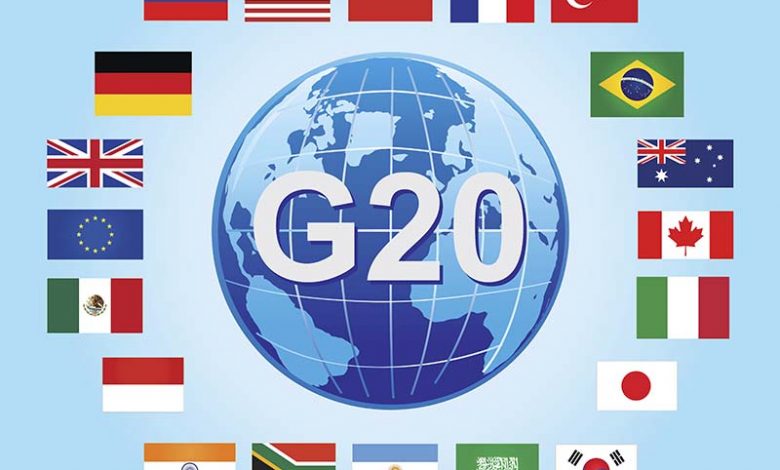Governments In G20 Countries Must Enable 1.5 Aligned Lifestyles
India has a lifestyle carbon footprint of 3tCO2e/cap/year, which is the second smallest among the ten countries analysed in the study

New research from the Hot or Cool Institute released finds that all G20 countries analysed exceed the lifestyle carbon footprint for 2050, requiring rapid and radical reductions. The report explores policies governments can implement to pave the way for greener lifestyles, rather than focusing on individual behaviour changes, which will not be sufficient to achieve these reductions. The latest edition of the Institute’s 1.5-Degree Lifestyles report analyses lifestyle carbon footprints from nine G20 countries around the world—Canada, UK, Japan, China, Turkey, South Africa, Brazil, India and Indonesia as well as Finland—and identifies where changes can be made to meet the Paris Agreement 1.5°C climate target.
By analysing lifestyle habits in six domains—food, housing, personal transport, goods, leisure, and services—this report presents the current per capita lifestyle carbon footprints for each country, and delivers options for shrinking lifestyle footprints in line with a 1.5°C world. In order to meet the 2050 ambitious Paris target, high-income countries’ lifestyle footprints need to be reduced by over 90% (91–95%), upper-middle income countries need to reduce their footprints by 68–86%, and lower-middle income countries like India need to reduce footprints by 76%.

India Current lifestyle footprints: – India has a lifestyle carbon footprint of 3tCO2e/cap/year. This is the second smallest among the ten countries analysed in the study and the smallest of the nine countries that exceed the 2030 target level of 2.5tCO2e/cap/year. This means that even India as a lower middle-income country must decrease its average lifestyle carbon footprint by 2030. – With a carbon footprint of 1.7tCO2e/cap/a personal transport accounts for more than half of the average Indian lifestyle carbon footprint.
The transport carbon footprint in India is thus higher than in the other middle-income countries studied. Motorcycles play a predominant role both in terms of transport footprint (69%) and mileage (73%), much higher than car use (20% and 15%, respectively). – Food and beverages is the consumption component with the second largest contribution India’s overall footprint – responsible for around 0.7tCO2e/cap/year. With a long tradition of vegetarian nutrition, the impact of meat and fish on the carbon footprint for food is low in India (4% and 2%, respectively) but dairy consumption (20% of total foodstuff consumption) has the second highest share (23%) in the footprint. More than half of the food-related footprint (53%) is due to consumption of cereals, where methane gas emissions from rice production plays a big role.
Due to low meat and moderate dairy consumption, India’s present carbon footprint for food roughly equals the requirements of the target for 2030. – Housing is the consumption component with the third-largest carbon footprint in India with below 0.5tCO2e/cap/year. The country has close to universal access to electricity but per-capita consumption is modest.
The power mix is dominated by coal and therefore carbon-intensive, despite the fact that India has the lowest consumption of housing energy among the countries studied. – Spending on consumer goods, leisure, and services is only responsible for less than 1% of the average Indian lifestyle carbon footprint. Key recommendations on how to improve: – Among the improvement options analysed, reducing commuting distances by making it easier for people to live closer to their workplace and vehicles’ fuel efficiency improvements were found to have the highest carbon footprint reduction potential for the average Indian across all domains of consumption. – Although India has the smallest food-related carbon footprint of the countries studied, there are still opportunities to shrink the country’s footprint through dietary changes and enhanced efficiency of food production. Dietary changes could involve a diversification of carbohydrate sources leading to a lower consumption of rice. For India, statistics have reported notable shares of both malnutrition and overnutrition. If dietary changes could be directed to the over consuming part of the Indian population, sufficient nutrition for the other end of the food-consumption scale might be provided without increasing carbon footprints. – Accelerating the shift from fossil fuels to renewable sources of electricity should also be a priority. A less carbon-intensive power-mix will allow the country to to increase electricity consumption among low-income households while keeping its greenhouse gas emissions low. Although India’s carbon footprint for housing is estimated to be within the 1.5-degree target for 2030 so far, a shift from coal power to low-carbon electricity from renewables would either allow an increase in energy consumption or decrease the burden from reducing the footprint of personal transport.
Both options could help ensure a sufficient consumption level for the poorest part of the population while reducing average lifestyle carbon footprints towards the 1.5-degree target. – As India continues to develop, including to meet the basic needs of a substantial percentage of its population, care should be taken to invest in low-carbon infrastructure, especially for housing and mobility, and to focus on low-impact areas that prioritize wellbeing of citizens. In addition, for the middle- and upper-class of the population decarbonisation strategies might include similar options to high-income countries’ population, including low-carbon consumption options in the different consumption patterns.
The study also highlights the huge inequalities and differences in lifestyle-related greenhouse gas emissions among the world’s major economies. An average person in Canada, the country with the highest per-capita emissions among the economies studied, has a lifestyle footprint six times larger than a person in Indonesia. Going beyond individual behaviour change, the report looks at how a lack of enabling policies might be preventing people from making 1.5-aligned lifestyle choices. From making specific recommendations for how countries can make changes to their public transport and housing infrastructure to call for bans of high-carbon intensive consumerism like the use of mega yachts, this report outlines policies and market interventions that can be implemented at a domestic and international level to curb lifestyle carbon footprints.
Dr. Lewis Akenji, the lead author of the report says “Talking about lifestyle changes is a hot-potato issue to policymakers who are afraid to threaten the lifestyles of voters. This report brings a science based approach and shows that without addressing lifestyles we will not be able to address climate change.”
Sandrine Dixson-Declève, Co-President of the Club of Rome says “The solutions advocated in this report acknowledge that behaviour change can only do so much without a full turnaround from our pro-growth politics, financial and economic models towards a more holistic wellbeing economy. This report is an essential companion for policymakers working at the intersection of society and climate change.”
Dr. Kazuhiko Takeuchi, President of the Institute for Global Environmental Strategies (IGES), Japan-based think tank says “This report highlights the importance of why Countries such as Japan, which have made net-zero commitments, need to show how changes in lifestyles can contribute to this goal, and also how the goal itself will shape societies in future.
Views expressed here are those of Dr. Seema Javed, a known Environmentalist, Journalist and Communications Expert




